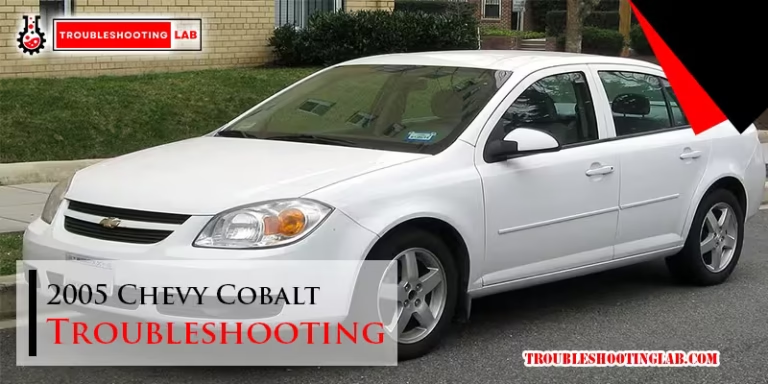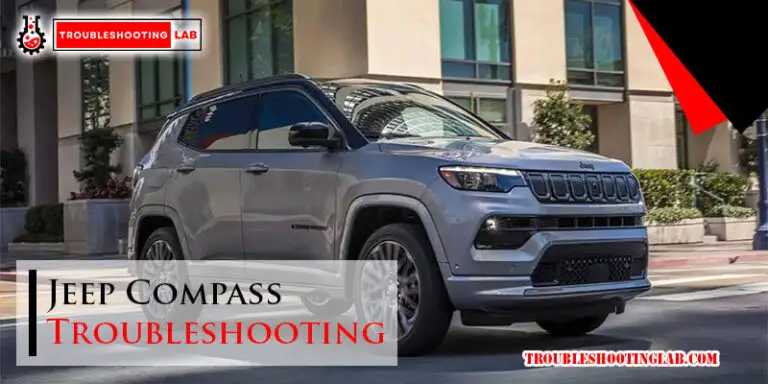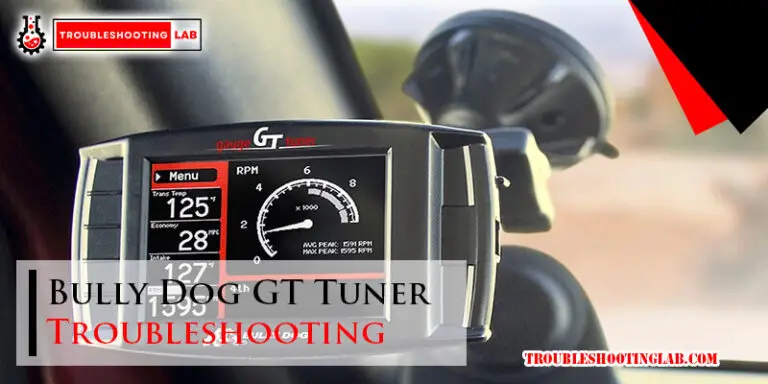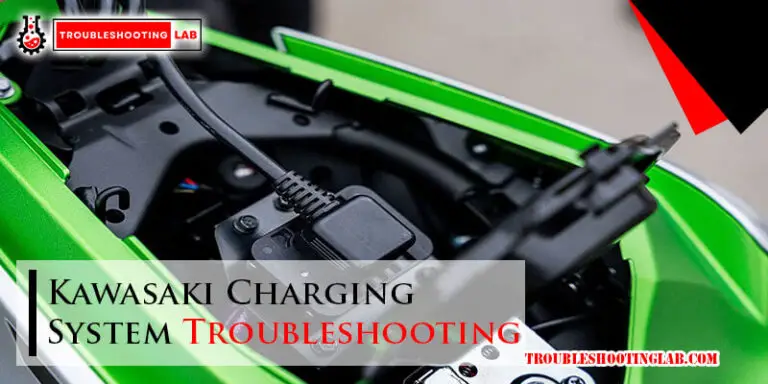Harley Davidson Turn Signal Troubleshooting: Quick Fix Guide
Harley Davidson motorcycles are iconic symbols of freedom and adventure. But, like any vehicle, they can face technical issues.
If you’re experiencing turn signal problems with your Harley Davidson, you’re not alone. Turn signal issues can range from minor inconveniences to significant safety concerns. Understanding the root cause is the first step to fixing the problem. In this guide, we’ll help you troubleshoot common turn signal issues.
Whether your signals aren’t flashing, are staying on, or aren’t working at all, we’ll provide practical solutions. With clear steps and easy-to-follow advice, you can get back on the road safely. Let’s dive into the essential troubleshooting tips for Harley Davidson turn signals.
Common Turn Signal Issues
Harley Davidson turn signals can face issues like flickering, not blinking, or staying on. These problems often stem from faulty bulbs, bad connections, or damaged wiring. Understanding these common issues can help in troubleshooting and ensuring safe rides.
Harley Davidson motorcycles are known for their robust build and classic style. Yet, even the best machines can have issues. Turn signals are one such area where problems can arise. Understanding common turn signal issues can save time and ensure safety on the road.Blinker Not Working
A non-functioning blinker can be frustrating. The first step is to check the bulb. If the bulb is burnt out, replace it. Sometimes, the problem lies in the socket. Corrosion in the socket can cause a bad connection. Clean the socket and check again. Another issue could be a blown fuse. Locate the fuse box and inspect the turn signal fuse. Replace it if necessary. Wiring problems can also cause this issue. Inspect the wiring for any damage or loose connections.Rapid Blinking
A rapidly blinking turn signal usually indicates a problem. Often, it means a bulb has burnt out. Check both the front and rear bulbs. Replace any burnt-out bulbs. Rapid blinking can also be caused by a faulty flasher relay. The relay controls the blink rate. If it’s defective, the turn signals will blink too fast. Replace the flasher relay if needed. Lastly, check the ground connection. A poor ground can cause rapid blinking. Ensure the ground wire is secure and free of corrosion. “`Tools Needed For Troubleshooting
Harley Davidson turn signal issues can be frustrating. However, with the right tools, you can quickly identify and fix the problem. In this section, we will look at the essential tools you need for troubleshooting your Harley Davidson turn signals.
Basic Hand Tools
Basic hand tools are essential for any troubleshooting job. Here is a list of the most important tools you will need:
- Screwdrivers – Both flat-head and Phillips-head screwdrivers are necessary.
- Wrenches – A set of open-end and box-end wrenches in various sizes.
- Pliers – Needle-nose pliers and standard pliers are useful.
- Wire Strippers – For dealing with any wiring issues.
These tools help you access and remove parts, tighten or loosen bolts, and handle wiring.
Multimeter
A multimeter is a crucial tool for electrical troubleshooting. It helps measure voltage, current, and resistance in the turn signal circuit. Here is how you can use it:
- Set the multimeter to the appropriate function (voltage, current, or resistance).
- Connect the multimeter probes to the appropriate points in the circuit.
- Read the measurements displayed on the multimeter screen.
Using a multimeter can quickly identify whether the issue is with the power supply or the turn signal unit itself.
Checking The Bulbs
Harley Davidson turn signals are crucial for safe riding. If they stop working, it can be frustrating. One common issue is faulty bulbs. Checking the bulbs is a simple task. It can help you identify the problem quickly.
Inspecting Bulb Condition
First, inspect the bulbs for any visible damage. Look for broken filaments. Check if the glass is cloudy or blackened. These signs mean the bulb is bad. You should replace it.
Next, remove the bulb from its socket. Hold it up to the light. Check for any cracks or discoloration. If you see any, the bulb is faulty. Replace it with a new one.
Replacing Faulty Bulbs
Get a replacement bulb that matches your Harley Davidson model. Turn off the motorcycle before starting. Remove the old bulb carefully. Insert the new bulb into the socket. Ensure it fits snugly.
After replacing the bulb, test the turn signals. Turn on the motorcycle. Activate the signals to check if they work. If they do, you have fixed the problem. If not, you may need to check other components.
Inspecting Fuses
Inspecting the fuses in your Harley Davidson is crucial for fixing turn signal issues. A blown fuse can often be the root of the problem. This section will guide you through the steps to locate and inspect the fuses. Follow these steps to ensure your bike’s turn signals work perfectly.
Locating The Fuse Box
First, find the fuse box on your Harley Davidson. It’s usually under the seat or side panel. Check your owner’s manual for the exact location. Use a screwdriver to remove the cover. This will give you access to the fuses.
Testing And Replacing Fuses
Now, inspect each fuse carefully. Look for any broken or burnt fuses. A damaged fuse will have a broken wire inside. Use a fuse puller or tweezers to remove it. Replace the broken fuse with a new one of the same rating. Ensure it fits snugly in the slot. This simple step can often solve the turn signal issue.
Wiring And Connections
Dealing with Harley Davidson turn signal issues can be frustrating. Often, the problem lies in the wiring and connections. Understanding how to inspect and fix these can save time and effort. Below, you will find steps to help you troubleshoot effectively.
Inspecting Wiring Harness
The first step is inspecting the wiring harness. Look closely at the wires. Check for any signs of wear or damage. Frayed wires can cause signal issues. Also, see if any wires are pinched. Pinched wires can disrupt the signal flow.
Trace the wiring from the turn signal switch to the lights. Ensure the wires are securely connected. Loose or disconnected wires can lead to malfunction. Use a multimeter to check for continuity. If there is a break, the current won’t flow properly.
Fixing Loose Connections
Loose connections are common culprits. Start by checking the turn signal bulbs. Ensure they are seated correctly in their sockets. If a bulb is loose, tighten it. Next, inspect the connectors. Make sure they are firmly attached.
Loose connectors can cause intermittent signal issues. Use a connector tool if needed. Push the connectors firmly until they click into place. Finally, check the ground connections. A poor ground can also cause problems. Ensure the ground wire is securely attached to the frame.

Credit: www.xr1200ownersgroup.com
Flasher Relay Issues
Experiencing issues with your Harley Davidson turn signals? One common problem is a faulty flasher relay. The flasher relay is crucial for the proper functioning of your turn signals. If it fails, your signals might not work correctly or at all. Understanding how to identify and replace a faulty relay can save you time and money.
Identifying The Relay
First, you need to locate the flasher relay on your Harley Davidson. Typically, it is situated under the seat or behind a side panel. Use your motorcycle’s manual to find the exact location. The relay is a small, box-shaped component with multiple prongs.
Once located, check for any visible signs of damage. Look for corrosion or burnt marks on the relay. Use a multimeter to test the relay’s electrical connections. Ensure the connections match the expected readings in your manual. If the readings are off, the relay is likely faulty.
Replacing A Faulty Relay
Replacing a faulty relay is straightforward. Follow these steps:
- Turn off your motorcycle and disconnect the battery to avoid electric shocks.
- Remove the seat or side panel to access the relay.
- Gently pull the relay out of its socket. Be careful not to damage the prongs.
- Insert the new relay into the socket, ensuring a snug fit.
- Reconnect the battery and test the turn signals to confirm they work.
Using genuine Harley Davidson parts is recommended for the best performance. After replacing the relay, check all turn signals to make sure they function correctly. This simple replacement can restore your turn signals to full working order.
Handlebar Switch Problems
Handlebar switch problems in Harley Davidson motorcycles can be a common issue. These problems might cause your turn signals to malfunction. Addressing handlebar switch problems can help maintain your bike’s safety and functionality. Let’s explore how to troubleshoot these issues.
Testing The Switch
Testing the switch is the first step in troubleshooting. Begin by checking if the switch moves freely. If the switch feels stuck, it might need cleaning or replacement. Use a multimeter to test the switch’s connectivity. Set the multimeter to the continuity setting. Touch the probes to the switch terminals. If there is no continuity, the switch might be faulty.
Cleaning Or Replacing The Switch
Cleaning or replacing the switch can resolve many issues. Start by disconnecting the battery to ensure safety. Next, remove the switch from the handlebar. Use contact cleaner to clean the switch. Spray the cleaner into the switch and move it back and forth. This helps remove dirt and debris. If cleaning does not solve the problem, consider replacing the switch. Installing a new switch often restores proper function.

Credit: www.youtube.com
Battery And Charging System
Troubleshooting Harley Davidson turn signal issues often begins with the battery and charging system. A weak or faulty battery can cause turn signals to malfunction. Similarly, a failing charging system may not provide adequate power. This section will guide you through checking both components.
Checking Battery Voltage
First, check the battery voltage. A weak battery may cause turn signal issues. Use a digital multimeter for accurate results. Follow these steps:
- Turn off the motorcycle.
- Set the multimeter to DC voltage.
- Connect the multimeter probes to the battery terminals.
- Read the voltage on the multimeter.
A fully charged battery should read between 12.6 to 12.8 volts. If the voltage is below this range, the battery may need charging or replacement.
Inspecting Charging System
If the battery voltage is fine, inspect the charging system. A faulty charging system can lead to a drained battery. Follow these steps:
- Start the motorcycle.
- Set the multimeter to DC voltage.
- Connect the multimeter probes to the battery terminals.
- Rev the engine to about 3,000 RPM.
The voltage should read between 13.5 to 14.5 volts. If the voltage is outside this range, the charging system may need repair.
Common issues in the charging system include:
- Faulty stator
- Bad regulator/rectifier
- Loose or corroded connections
Check each component for wear or damage. Ensure all connections are clean and tight.
Additional Tips
When dealing with Harley Davidson turn signal troubleshooting, having some additional tips can help keep your bike running smoothly. This section will provide you with some valuable pointers to ensure your signals function correctly. Follow these tips to maintain your Harley Davidson’s electrical components and know when it’s time to seek professional help.
Maintaining Electrical Components
Keeping your bike’s electrical parts in good shape is crucial for the proper functioning of turn signals. Regularly check the wiring and connections to ensure they are secure and free from corrosion. Use a multimeter to test the voltage and ensure the circuits are working correctly.
Here are some steps to maintain your electrical components:
- Inspect the fuses and replace any that are blown.
- Clean the battery terminals and ensure they are tightly connected.
- Check the turn signal bulbs and replace any that are burnt out.
- Examine the wiring harness for any signs of wear or damage.
- Ensure the turn signal switch is functioning properly.
Proper maintenance can prevent many common electrical issues, ensuring your turn signals work as intended.
When To Seek Professional Help
Some issues may require professional attention. If you have tried the above steps and your turn signals still do not work, it might be time to consult a mechanic. Here are some signs that indicate you need expert help:
- The turn signals are not responding at all.
- There is a persistent issue with the wiring.
- The turn signals are blinking too fast or too slow.
- You notice a burning smell or see smoke from the electrical components.
- There are recurring problems even after replacing parts.
A skilled technician can diagnose and fix complex electrical issues, ensuring your Harley Davidson remains safe and reliable.
Credit: www.reddit.com
Frequently Asked Questions
Why Are My Harley Davidson Turn Signals Not Working?
Check for a blown fuse, faulty bulbs, or a bad relay. Loose wiring can also be a problem.
How Do I Reset My Harley Davidson Turn Signals?
Turn the ignition on and off. Press the turn signal switch. This can reset the system.
What Causes Harley Davidson Turn Signal Lights To Blink Fast?
Fast blinking often means a burnt-out bulb. It can also be due to a faulty flasher relay.
How Can I Test My Turn Signal Relay?
Use a multimeter to check for continuity. No continuity means the relay is bad and needs replacing.
Why Do My Harley Davidson Turn Signals Stay On?
This may be due to a bad turn signal switch. Check the wiring for any loose connections.
Conclusion
Solving Harley Davidson turn signal issues is easier than it seems. Follow the steps mentioned above to diagnose and fix common problems. Ensure connections are tight and bulbs work. Check the fuse and replace if needed. Regular maintenance helps avoid future troubles.
A working turn signal keeps you safe on the road. Stay vigilant and ride confidently. Happy riding!

